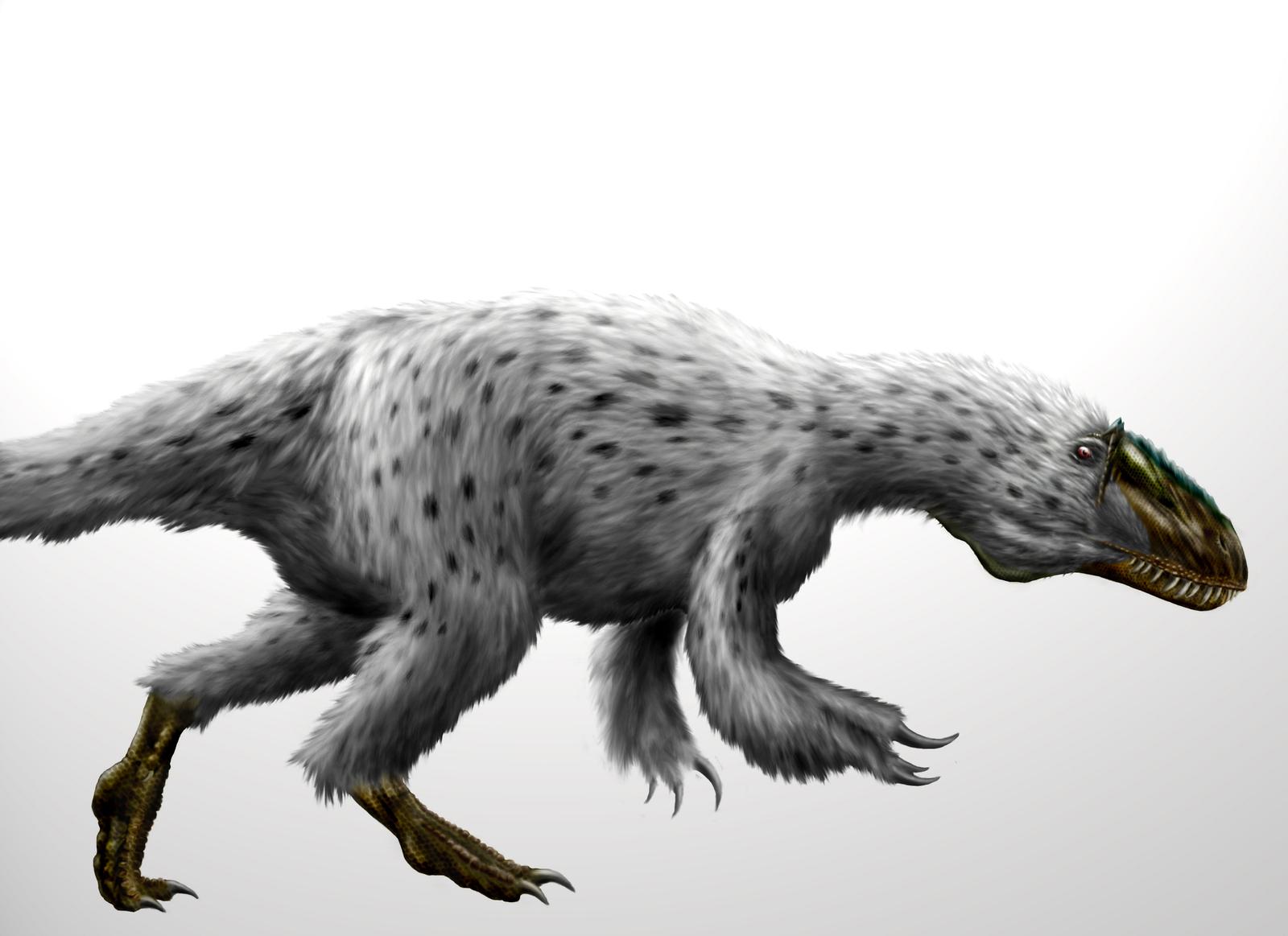
Yutyrannus is a mishmash of Latin and Mandarin and means something like "Beautiful Feathered Tyrant".
This dinosaur is a carnivorous theropod and an early relative of Tyrannosaurus Rex.
In the Chinese province of Liaoning, 3 specimens, one large and two small, almost completely preserved fossils were excavated. They are 125 million years old, almost twice the age of the Tyrannosaur Dynasty.
The large animal was about 9 meters long and weighed about 1.5 tons.
Thus, it was only about one-fifth as heavy as its infamous cousin and descendant Tyrannosaurus Rex.
| Profile | Yutyrannus |
|---|---|
| Prehistoric Era | Lower Cretaceous |
| Order | Saurischia |
| Suborder | Theropoda |
| Family | Proceratosauridae |
| Tribe | Tyrannosauroidea |
| Genus | Yutyrannus |
| Species | Yutyrannus huali |
| Height | 3.5 meter |
| Length | 9 meter |
| Weight | 1.5 tons |
| Territory | China (Chinese province Liaoning) |
The special thing about these excavated fossils, however, is that feathers could clearly be detected. Thus Yutyrannus is the largest creature found so far that was feathered. This title of the largest feathered dinosaur was previously held by Beipiaosaurus. However, Yutyrannus is 40 times heavier than Beipiaosaurus.
The feathers of Yutyrannus cannot be compared with the feathers of today's birds. They are simple filaments and they were in no way suitable for flying. They can be compared rather with the fuzzy down of a today's baby chick. They did not possess the stiffness of flight-capable birds living today.
The proven feathers were about 15 to 20 cm long. They were found in fragments in different parts of the fossils. The scientists suppose that the whole body of Yutyrannus was covered with these feathers.
Yutyrannus lived in the middle half of the earlier Cretaceous period. During this geological period, global temperatures were cooler than in the Late Cretaceous, when T-Rex lived. Scientists estimate that temperatures were 10 degrees cooler.
Although it is known that very large animals, in order to prevent overheating, are forced to reduce their insulation (elephants, rhinoceroses), it is assumed that Yutyrannus needed its feathers for thermal insulation (example: mammoth).
It is also possible that the protofeathers of Yutyrannus had another function. For one, he may have used this feather fluff to keep the incubated eggs warm in the nest.
Another possibility discussed is the use of the plumage for camouflage or courtship.
Based on these three fossils found, scientists see an increased likelihood that Tyrannosaurus Rex was also feathered. Although feathers may have disappeared from adult animals, they could have served as thermal insulation for the T-Rex young.
Image Sources: Cover image: by Durbed unter Creative Commons Attribution-Noncommercial-No Derivative Works 3.0 License
Conty, CC BY-SA 3.0 https://creativecommons.org/licenses/by-sa/3.0, via Wikimedia Commons
Tomopteryx, CC BY-SA 4.0 https://creativecommons.org/licenses/by-sa/4.0, via Wikimedia Commons